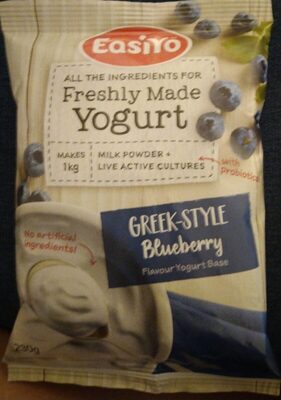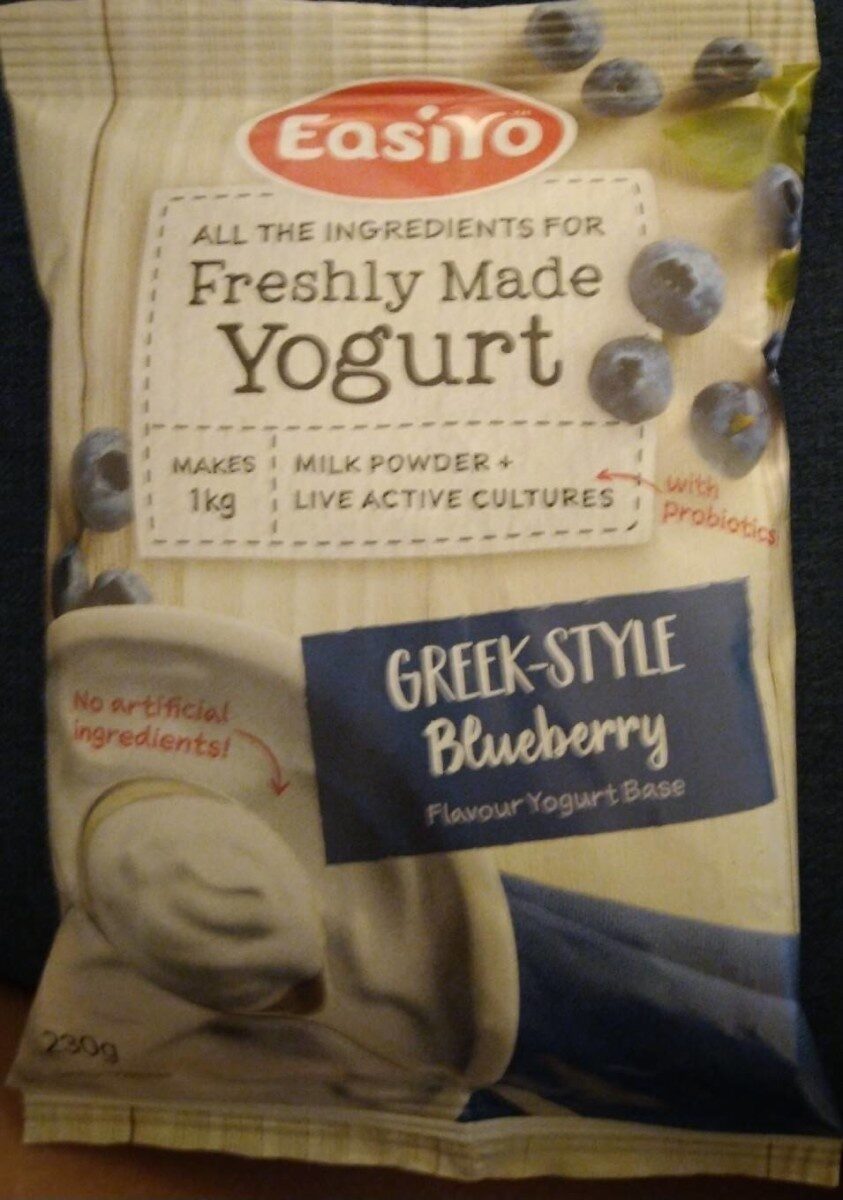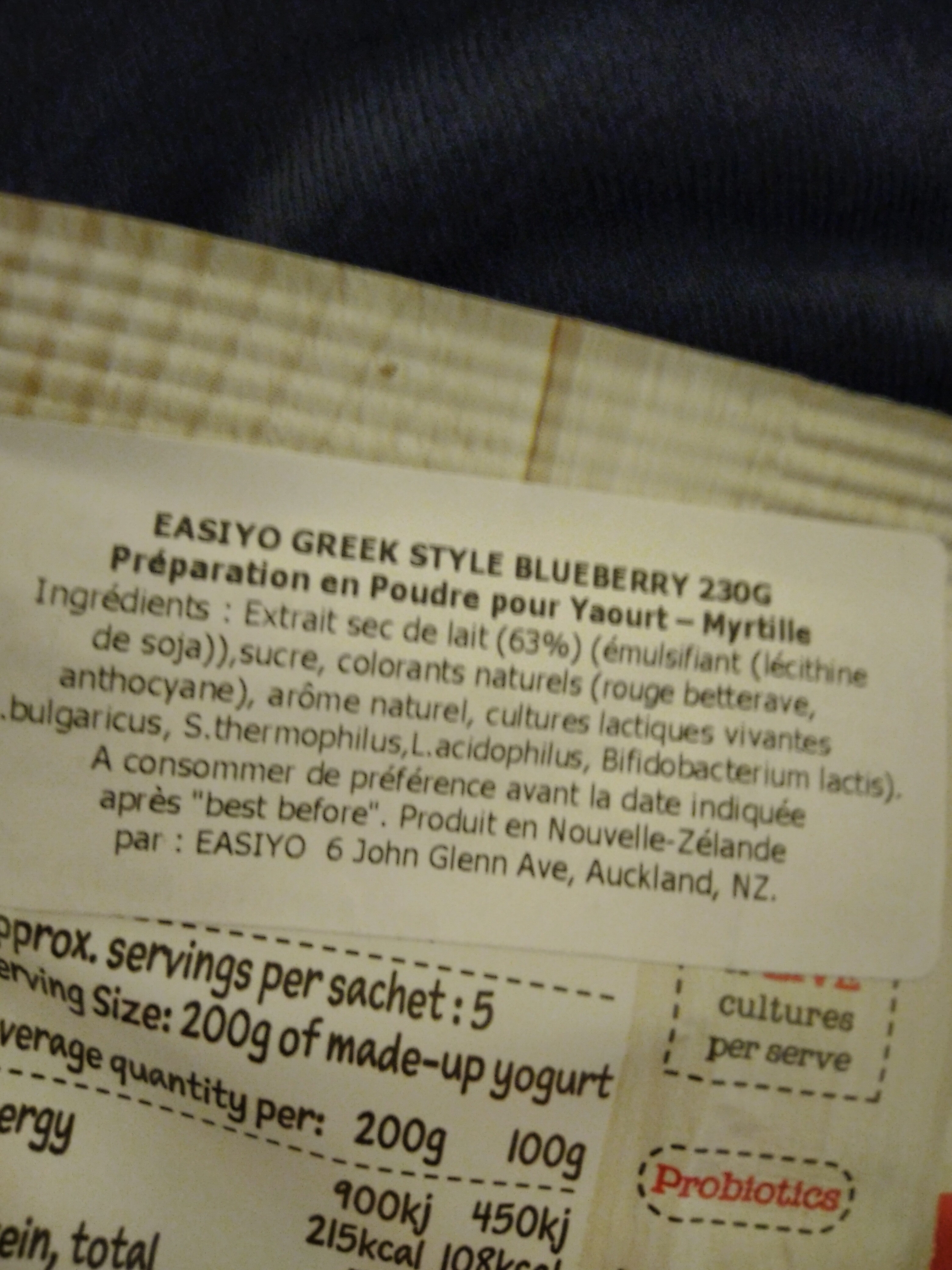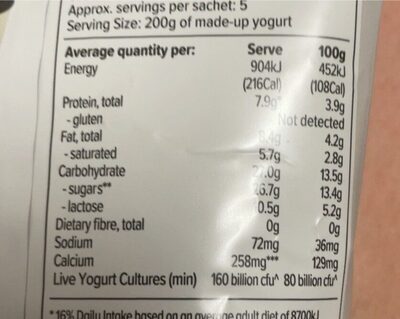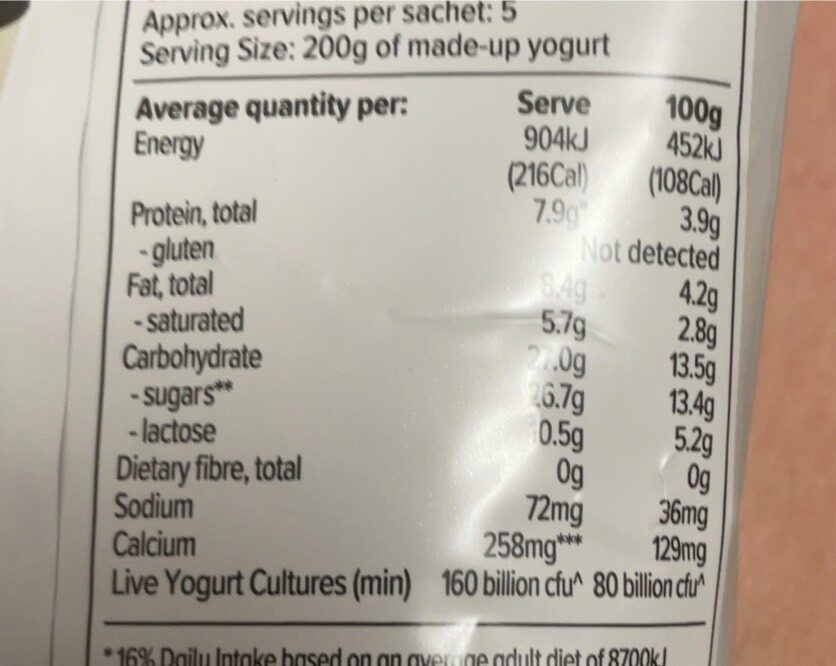Greek-style Blueberry Flavour yogurt base - easiyo - 230 g
This product page is not complete. You can help to complete it by editing it and adding more data from the photos we have, or by taking more photos using the app for Android or iPhone/iPad. Thank you!
×
Barcode: 9416892525087 (EAN / EAN-13)
Quantity: 230 g
Packaging: Pack
Brands: Easiyo
Origin of ingredients: New Zealand
Manufacturing or processing places: Nouvelle-zelande
Stores: Woolworths, Coles
Countries where sold: Australia, New Caledonia
Matching with your preferences
Environment
Packaging
Transportation
Report a problem
Data sources
Product added on by openfoodfacts-contributors
Last edit of product page on by kiliweb.
Product page also edited by archanox, packbot, yuka.UW9sUk5hbzZ0djhXdVBBYy9BUFkzOHhheHNlTGUwem9FK3BLSUE9PQ, yuka.sY2b0xO6T85zoF3NwEKvlh13Y9rs_RjfOyHmq3HTmcmWIoTTOttWs7OjEqs.
If the data is incomplete or incorrect, you can complete or correct it by editing this page.
